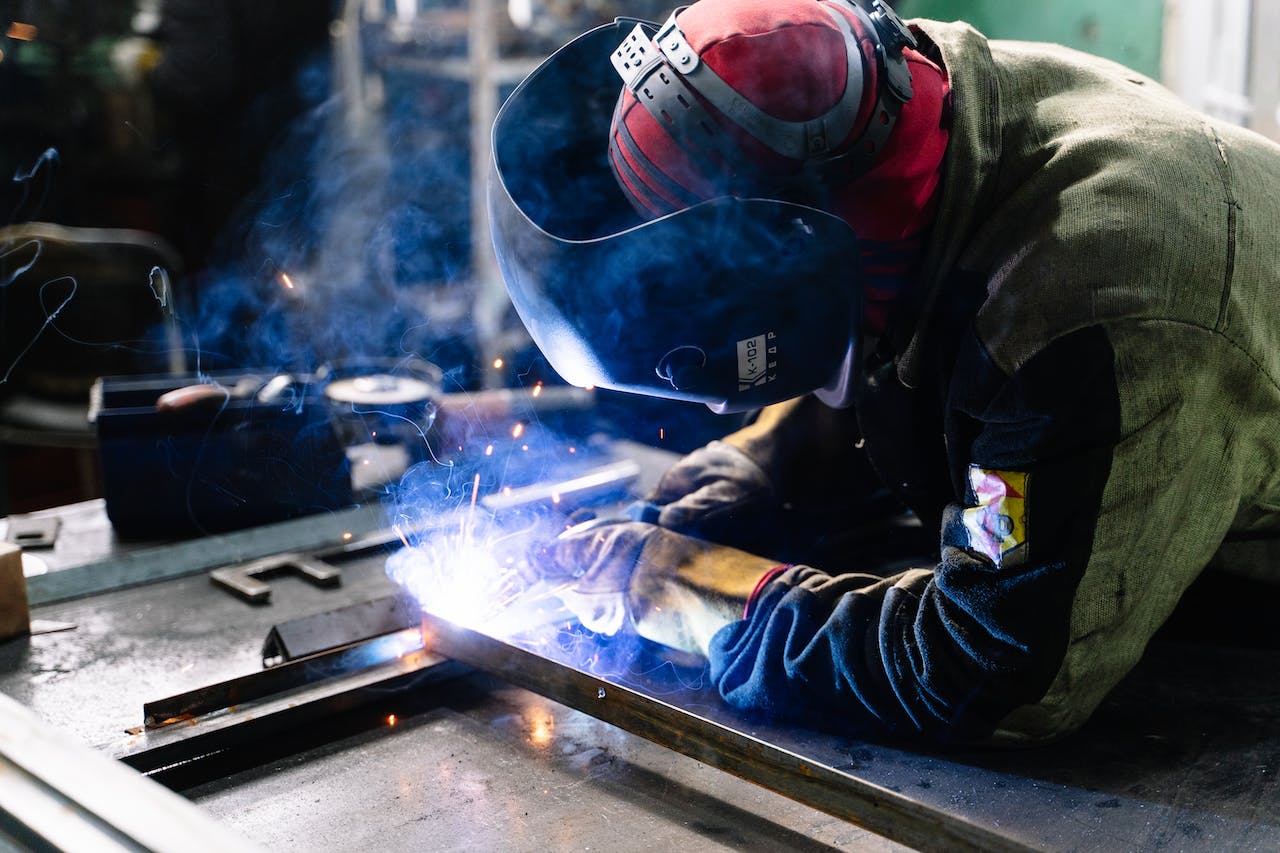Like working with your hands? Hoping to jump into a well-paying career soon without having to wade through any of the stresses of higher education? If so, you should consider becoming a steelworker.
Curious as to the specifics of becoming a steel worker? Wondering what the job outlook is like? We’re going to cover both of those questions and more below.
What Is a Steel Worker?
Steelworkers help to assemble, install, and reinforce steel like buildings, bridges, and road supports. They do this not only with the use of bolts but the use of welding as well.
Working together in teams, steelworkers can most typically be found on construction sites. They’re integral to the crew, performing physical and conceptual tasks that are both difficult and dangerous.
Not only must steelworkers expose themselves to the potential of being crushed by heavy entities but to the potential of falling from these entities as well. As such, when engaging in steelwork, one must be careful to follow all safety protocols.
What Skills Do Steelworkers Need?
To become a steelworker, you need a variety of skills, some of which are technical and some of which are physical. Not only will you require a deep knowledge of steelworking practices but the bodily wherewithal necessary to put them into action.
Technical skills include metal cutting, blueprint reading, digital drawing, and steel alignment. Advanced skills include welding, crane signaling, rigging, and working with coping robots.
Physical skills include balance, strength, hand-eye coordination, stamina, and depth perception. You must also be unafraid of heights, as you’ll be working at extreme elevation on a regular basis.
Most of these skills can be improved upon. Note, though, that some (like being unafraid of heights) are inherent in a person. In other words, not everyone is cut out to be a steelworker, no matter how hard they try.
So, before you pursue the career any further, make sure that your skill set fits the bill. If you don’t already possess the skills necessary, make sure that you can develop them over time.
How to Become a Steelworker
As was noted above, becoming a steelworker doesn’t require any higher education. Breaking into the profession is fairly straightforward. To do so, you must do the following.
Graduate From High School
While higher education isn’t required, high school education is. You must have a high school diploma (or GED) in order to pursue the career of a steelworker. Note, you must also be at least 18 years of age.
Start an Apprenticeship
If you possess the prerequisites reviewed above, you can move onto the next stage: securing an apprenticeship. Serving an apprenticeship is vital to becoming a steelworker, as it provides you with the skills and knowledge necessary to complete the job in a safe and satisfactory manner. Not to mention, it’s legally required.
Steelworker apprenticeships last between 3 and 4 years, with each year requiring you to obtain 2,000 hours of on-the-job training and 144 hours of technical training.
Throughout the course of your apprenticeship, you’ll learn a number of new things, some of them being technical and some of them being conceptual. Some examples include metal cutting, metal erecting, blueprint reading, and first aid.
Wondering where you can find an apprenticeship? There are a number of opportunities available. Your best bet is to search Google for “ironworker apprenticeships in [your location]”. Doing so should turn up all available openings.
Obtain Vital Certifications
If you want to increase your chances of landing a job and maximize your pay over the long-run, you should pursue voluntary certifications. Certifications in rigging, welding, and crane signaling can bolster your resume, making you much more attractive to employers.
Some specific certifications to pursue include the American Welding Society certification and the NCCCO certification. Note, though, that there are others available.
Find Employment
Once you’ve finished your apprenticeship, you can begin searching for a job. If you’re lucky, the company with which you served an apprenticeship will take you on as a full-time employee. However, if this doesn’t happen, you’ll have to search elsewhere.
The best places to look for steelworker jobs are job boards such as Indeed, ZipRecruiter, and the like. Of course, you might also be able to use the connections that you made during your apprenticeship. The key is to ask around and be aggressive.
How Much Money Do Steelworkers Make?
The salaries of steelworkers vary based on a number of factors. These factors include experience, the geographical location of the work being done, and the complexity of the task that’s being performed.
That said, most steelworkers make around $50,000. Whereas steel reinforcers average approximately $48,000 a year, structural steelworkers make around $53,000 a year.
Note, though, that many also receive impressive benefits packages, including health, dental, and vision insurance as well as 401(K) matching. These benefits carry terrific value and can truly help to incentivize those who are on the fence about pursuing steelwork.
Steelworker Job Outlook
At the present time, the job outlook for steelworkers is extremely bright. The US Bureau of Labor Statistics shows that steelworker jobs are growing at a rate of 11%. This is far above average when compared to all other jobs.
It’s expected that, from 2018 to 2028, the country will create 11,200 additional steelworker jobs. So, in short, this job is secure. If you enter it as a profession, you can expect to stay in it, at least for the foreseeable future.
Looking for More Career Profiles?
As you can see, being a steel worker has both its pros and its cons. On one hand, it’s one of the most dangerous professions in existence; On the other hand, it pays well and offers a good level of job security. As such, it might be a career worth trying for.
Looking for more career profiles? Our website has you covered. Take a look at our other articles now!

